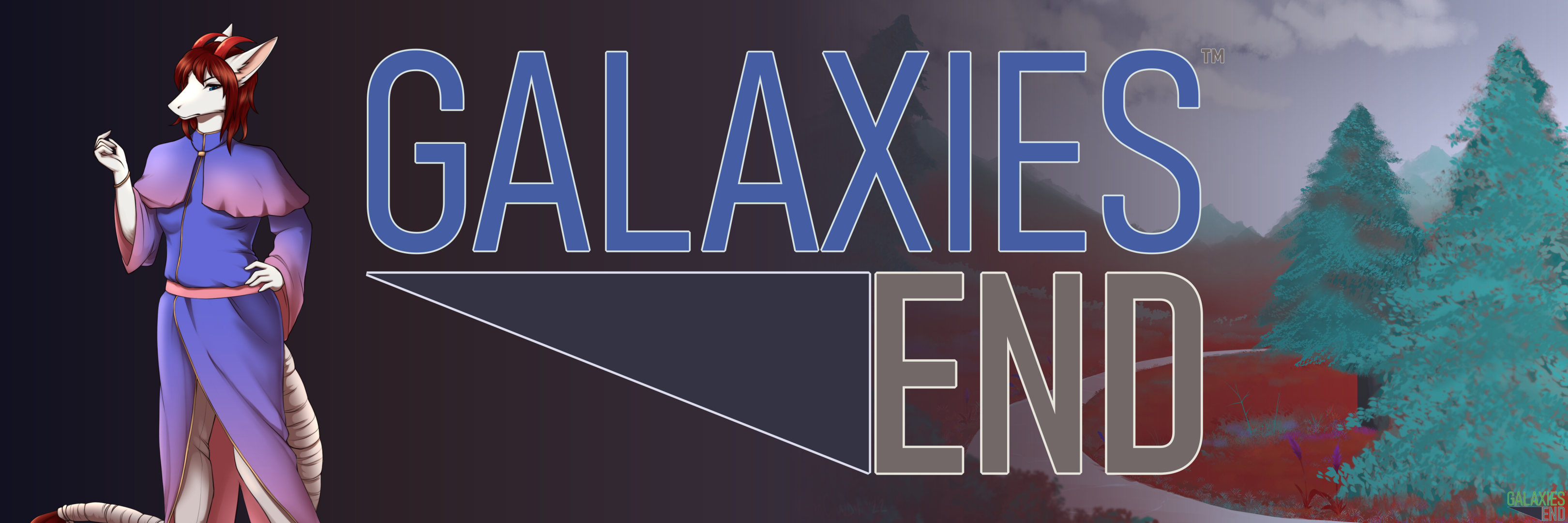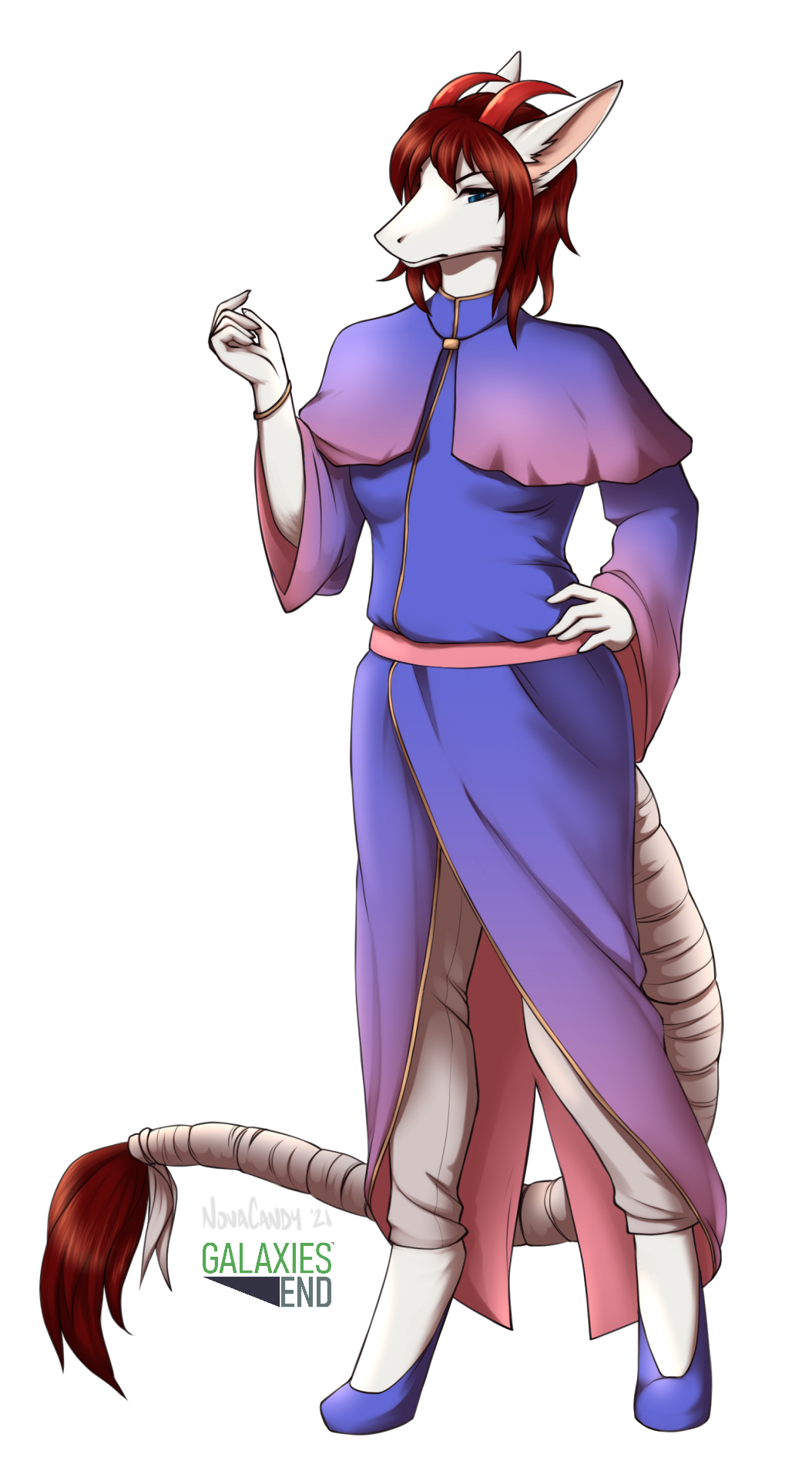Chatari
One of the most common ethnic groups on Roka, the Chatari are commonly viewed as white-furred, blue-eyed, traditional, and heavily spiritual people. Chatari can trace their ancestry back to the ancient cultures of the sub-arctic Chataki region. Their native tongue, Si Kari, has been widely adopted as the common language of the Drakari Union. Most Chatari people can call either Chatakino or Nikano their home city, each having its own diverse local cultures.
General Appearance
Traditionally, the Chatari people are white-furred, blue-eyed Drakari of around 175 lbs and 6'3" - Average for their species. Beneath their thick, heavy fur, the common Chatari has a pale skin tone lacking any form of extra protection from the sun. Less common instances of fully 'red'-furred examples exist as well.
Many Chatari have wavy or straight hair in blondes, reds, and browns, with tails covered in a thick fur of the same color. Their horns are typically in reds, browns, and blacks and are curved, averaging 6 inches in length. A typical Chatari's muzzle is long and narrow. Their eyes generally lack the protective membrane occurring in some other Drakari ancestries.
Culture
Dress
Geographically calling the cold northern regions their home, Chatari clothing tends toward insulating oneself from the weather. As a result, multiple clothing layers are common. For most Chatari, pants and thick shirts are the norms. Robes, layered on top of their clothing, are especially common among Priesthood members and those dedicating their lives to the teachings of the dead goddess Nika-Ta. However, the robes are only culturally accepted for women. Underneath, many Kari wrap their bodies in an additional layer of insulating cloth as a form of full-body underwear. In place of shoes, it's common to wrap their feet in this same type of cloth.
Color
Throughout Chatari culture, color plays a significant role in society, including in clothing worn. Many Chatari wear bright, vibrant clothes, with colors that signify many things, ranging from their mood for the day, to the observance of events, to religious and societal status.
However, not every Chatari covers themselves in bright colors. Instead, some older community members wear neutral colors and allow their Karili Tiku to serve as their societal display.
Karili Tiku
Main article: Karili Tiku
Perhaps the most vital component to Chatari dress culture is the Karili Tiku. Every Chatari keeps their tail tightly wrapped in an extended length of vibrantly colored cloth, and this tail wrapping acts as the primary societal symbol. Different colors and color combinations have differing meanings. For example, a Chatari who wraps their tail in black is mourning or recognizing a tragic event, while one dressed in the vibrant blue of the morning sky is a Priestess of Nika-Ta.
Gender
In local Chatari culture, there is little to no difference in the treatment of men and women. However, the laws of the Priesthood of Nika-Ta tend to favor female Drakari. The Priesthood forbids robes for males. Reaching higher ranks within religion and government is far easier for Chatari women, especially the female-only position of Nikanote.
Treatment of crimes against the Priesthood also tends to be unbalanced. While women will still receive a harsh punishment for their actions, it is not uncommon for men to receive even more brutal treatment. Indentured servitude to the Priesthood is the most common sentence for male criminals. Local crimes such as minor thefts not involving the Priesthood are generally more equal.
Major Language Groups
Si Kari
Main article: Si Kari
Si Kari, the native language of the Chatari people and their Sakari neighbors, is commonly spoken throughout the Chataki region. The language is also the primary common language used throughout the Drakari Union due to its relative simplicity compared to other languages. Many Chatari consider the proper way to speak Si Kari by following a set tempo, speaking each syllable on-beat, and slightly pausing between words. Often described as monotone, the only inflection to a Chatari's voice is the raised pitch on each ending stress syllable (I.e., chataRI, drakaRI, niKA-TA).
Naming Traditions
Given Names
Chatari names are generally not gender-driven and follow the same syllabary structure as the Chatari language, Si Kari. Most names are two to four syllables in length. Many Kari are named after something or someone of importance to their parents or guardians. Common examples include trade tools, flowers, ancestors, prominent regional figures, and in some cases, close family friends.
Family Names
In traditional Chatari culture, 'family names' do not exist. Instead, an individual's 'surname' is their father's given name or, if their father is not known, their mother's. For example, if a born child's mother is named Nata Kilora and her father is named Konate Loti, her full name would be Rama Konate. Additionally, Chatari tradition further changes an individual's name when they form a union with their partner - Both persons take on their partner's first name as a 'second name.' In the previous example, the parent's full names would be Nata Konate Kilora for the mother and Konate Nata Loti for the father.
Adopted children are generally given the adoptive name of their new family. In some cases, where the adopted person's full name was known, the family may choose to let them keep their original names - Usually, this is a decision made by the adopted child.
Other Naming Rules
While many Chatari choose to name their children after concepts, objects, or people of significance, some names are rarely or never used. Naming a child after the Dead Goddess Nika-Ta, for example, is highly taboo in Chatari culture. This taboo has also extended to the names of former Drakari-Ta, especially that of Altara Krieus, the original Drakari-Ta.
Cultural Relations
Despite being one of the most populous cultures on Tikra, the Chatari are not necessarily the most well-liked. Many other Drakari view them as hypocritical and almost zealot-like in their beliefs and obedience to the Priesthood. However, the Chatari are also known to be quite strong in their loyalty to the Drakari-Ta and the Union, making their position in the Civil War quite clear.
The culture's dogmatic approach has led to conflict between them and their Sakari neighbors, who believe Nika-Ta to have been a cruel dictator. They have also recently had more strained relations with the Matari due to their similarly unfavorable opinions of the current Drakari-Ta.
Outside of cultural differences, the Chatari are also generally viewed as boring in everyday conversation. Foreigners typically describe Chatari speaking in Si Kari as very droning or monotone. It is also common for foreigners to be frustrated with Chatari conversation partners as their manner of speech is regularly corrected.
Major Organizations
Priesthood of Nika-Ta
Main article: Nika-Ta Priesthood
The primary religion of the Chataki region, the Priesthood encompasses the belief in a long-dead goddess named Nika-Ta that led their Chatari and Sakari ancestors to peace and prosperity in ancient times. The Priesthood also serves as the main governing body of Chataki. Under the leadership of the Nikanota, the Priesthood guides the Chatari to the teachings and laws of Nika-Ta.






Comments